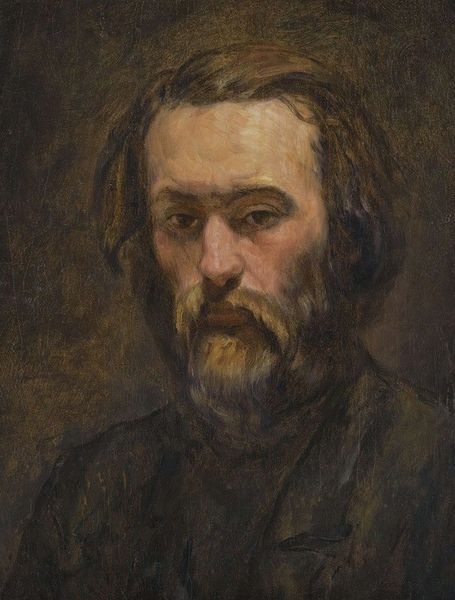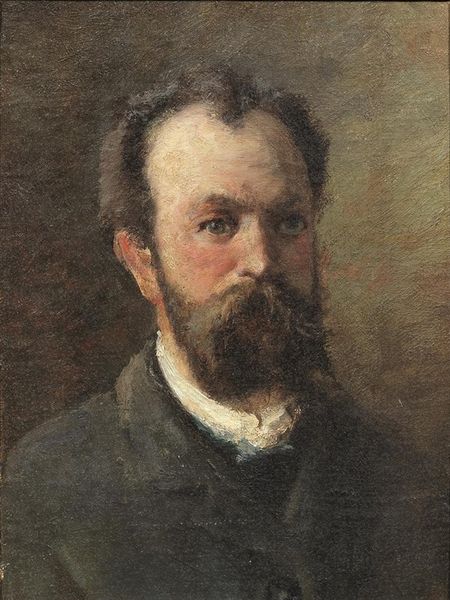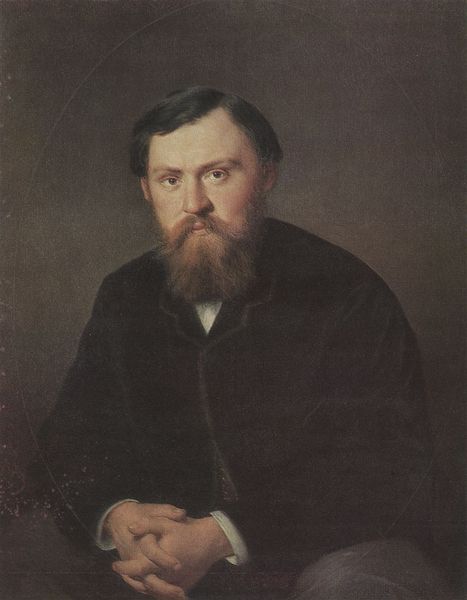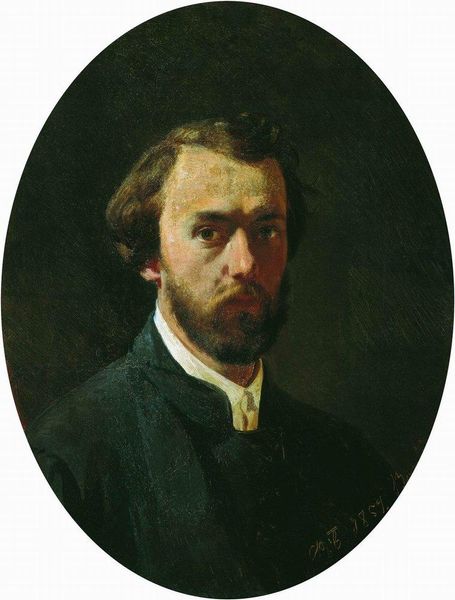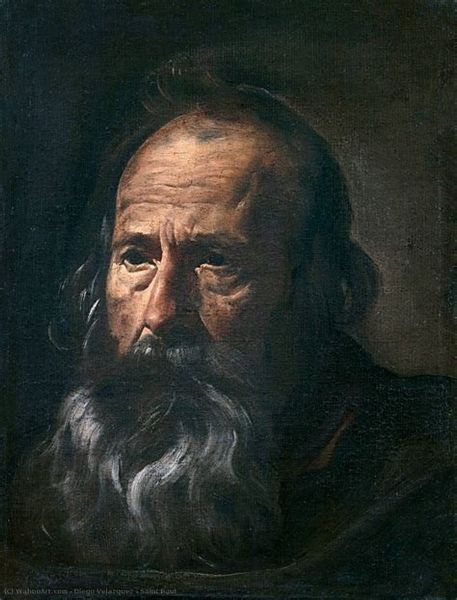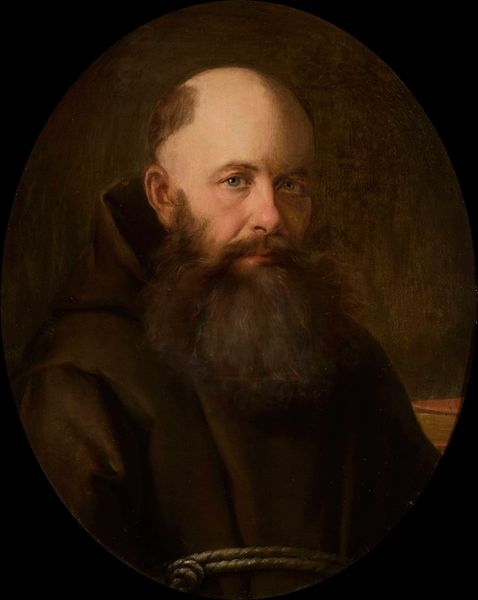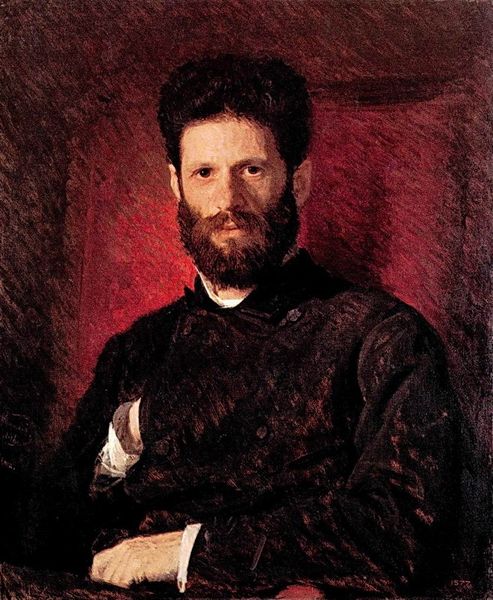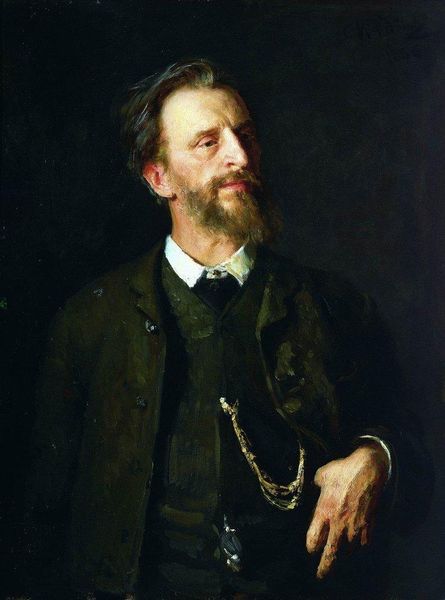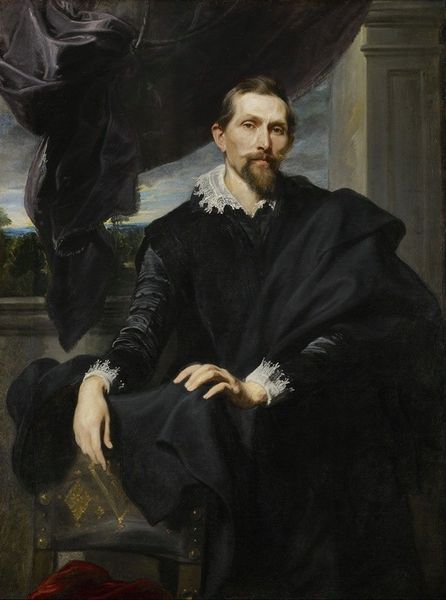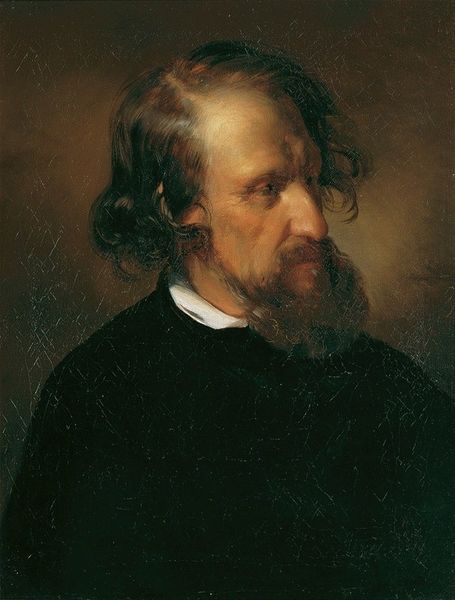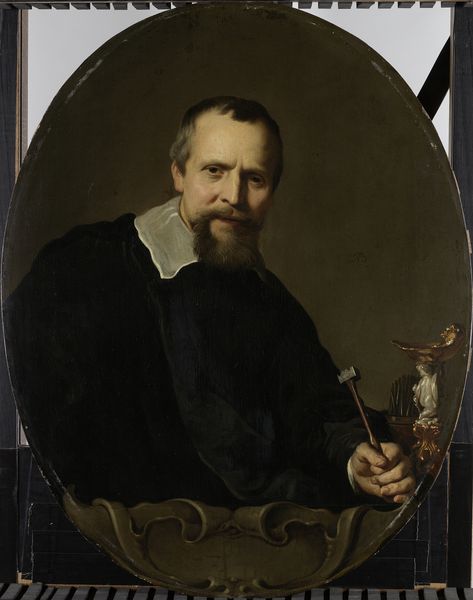
painting, oil-paint
portrait
figurative
self-portrait
painting
oil-paint
oil painting
post-impressionism
Copyright: Public Domain: Artvee
Curator: This is Émile Bernard's self-portrait from 1897. It’s an oil painting showcasing Bernard at a pivotal moment in his career, deeply entrenched in Post-Impressionist circles. Editor: My first thought? It's a portrait dominated by muted tones—that seafoam green backdrop and the subdued earthiness of Bernard himself. There's a distinct flattening of perspective, too. Curator: Yes, and it's interesting to consider his choice of medium and style at this point. Bernard, disillusioned with the academic art world, found kinship with figures like Gauguin, and this painting really reflects that aesthetic shift towards simpler forms, emphasizing the flatness you noticed. Editor: Absolutely. Notice how Bernard reduces forms to their essential shapes—particularly in the rendering of the vase and even his own clothing. It pushes towards abstraction but without completely losing the figure. Curator: I find it intriguing that Bernard inscribes "A nos amis de Hollande" at the top. During this period, many artists looked towards alternative, often collective artistic models. The dedication suggests this self-portrait might have functioned as a calling card within artistic networks. Editor: A visual handshake, of sorts. And, structurally, it's intriguing how the angularity of his face and the floral arrangement play against each other, one organic, the other, harshly geometrical in construction. Curator: Right. While visually spare, the painting offers rich socio-political commentary on art and camaraderie at that time. Bernard wasn’t just painting himself, he was embedding himself within a network. He positions himself within that community of forward thinking painters of the avant-garde. Editor: Considering the tonality and flattening effects, along with the Post-Impressionistic brushstrokes, there’s a moodiness present here. It moves far from the bright, fleeting impressions and toward deeper engagement, wouldn’t you say? Curator: Yes, there is something somber to it. Overall, a lot of information about artistic community and the formal qualities are subtly communicated in a striking self-portrait that blends both aesthetic experimentation and cultural commentary. Editor: An important piece, not only to understand Bernard, but the art of the era itself.
Comments
‘A nos amis de Hollande’ (to our friends in Holland) Bernard wrote at the upper left. He meant the family of Andries Bonger, to whom he gave this self-portrait. Bernard belonged to the Nabis, the group of artists around Paul Gauguin, and was friends with Vincent van Gogh and Jan Verkade. He painted his self-portrait in the style called Synthetism or Cloisonnism, featuring simple, clearly delineated shapes and a limited range of colours.
Join the conversation
Join millions of artists and users on Artera today and experience the ultimate creative platform.
